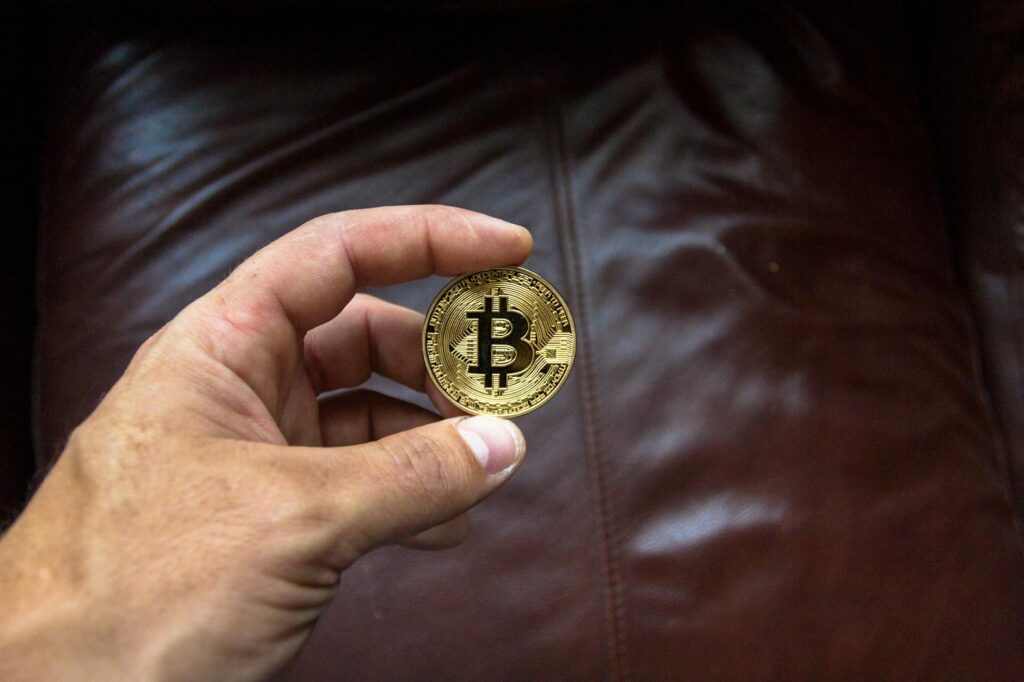The Unspoken Rule of Crypto: Your Keys, Your Coins, Your Responsibility
You did it. You finally bought some cryptocurrency. Maybe it’s Bitcoin, maybe it’s Ethereum, or perhaps a promising altcoin. The excitement is palpable. You’re part of the financial revolution. Your new wallet generates a string of 12 or 24 random words—your seed phrase—and a long, complex private key. The instructions are clear: “Write this down. Keep it safe. Never share it.”
So, what’s your first instinct? If you’re like most people, it’s to find the most convenient way to save it. Take a screenshot. Save it in a notes app. Email it to yourself. Put it in a password manager. It’s quick, it’s easy, and it feels safe enough. But this convenience is a trap. In the world of cryptocurrency, that simple act is the equivalent of leaving the keys to your financial kingdom taped to your front door. The absolute number one rule is that you should never, ever store private keys or seed phrases in any digital format. Not on your computer, not on your phone, and definitely not in the cloud. Let’s break down why this is the most critical security practice you will ever learn.
Key Takeaways
- Storing keys or seed phrases digitally (notes apps, photos, cloud storage) exposes them to a huge range of online threats like malware, phishing, and direct hacking.
- Screenshots and digital text files are prime targets for sophisticated thieves who can scan your devices and cloud accounts for them without your knowledge.
- The only truly secure storage methods are physical and completely offline, disconnected from the internet.
- Your best options for security are writing your seed phrase on paper or metal and, for the best combination of security and usability, using a dedicated hardware wallet.
First, What Exactly Are We Protecting?
Before we dive into the dangers, let’s get crystal clear on what these things are. It’s simpler than you think.
Imagine your crypto holdings are inside a super-secure, transparent vault. Everyone can see the vault (that’s the public blockchain), but only one thing can open it: a unique, special key.

Your Private Key
This is it. This is the key. It’s a long string of alphanumeric characters. If you have the private key, you have 100% control of the funds in that vault. You can open it, send crypto out, and do whatever you want. Anyone else who gets their hands on this key has that same power. There’s no bank to call, no password reset, no fraud department. Possession of the key is absolute ownership. Period.
Your Seed Phrase (or Mnemonic Phrase)
What if you lose that one, single key? Are your funds gone forever? Not necessarily. This is where the seed phrase comes in. Think of the seed phrase—that list of 12 or 24 words—as the master blueprint to recreate your private key. It’s a backup, but it’s a backup with god-mode powers. If your phone breaks or your laptop is stolen, you can download a new wallet, enter your seed phrase, and boom—your private key is regenerated, and you regain access to your vault. It’s an incredible system. But it also means that if a thief gets your seed phrase, they can do the same thing. They can regenerate your key and empty your vault from anywhere in the world.
So, to be clear: Protecting your seed phrase is the same as protecting your private key. They are two sides of the same golden coin.
The Digital Danger Zone: Why Online Storage Is a Catastrophe Waiting to Happen
“Okay, I get it, they’re important. But my computer is secure! I have an antivirus and a strong password.” That’s a common thought, but it reflects a misunderstanding of the threat landscape. Your devices are connected to the internet, and that makes them a battlefield. Storing your keys digitally puts them right in the line of fire.
Malware and Keyloggers: The Silent Thieves
This is probably the most common threat. Malware is malicious software that can infect your computer or phone without you even realizing it. You might click a bad link, download a compromised file, or visit an infected website. Once on your device, this software can do terrifying things:
- Clipboard Hijacking: You copy your private key to paste it into your wallet. The malware instantly replaces it with the hacker’s address. You think you’re sending funds to your own exchange account, but you paste their address instead. By the time you notice, the transaction is confirmed and irreversible.
- Keylogging: The malware records every single keystroke you make. If you ever type your seed phrase into any application—even a simple text document—the hacker has it. Instantly.
- File Scraping: Some malware is specifically designed to scan your entire hard drive for files that look like private keys or seed phrases. It searches for filenames like `my_keys.txt` or `bitcoin_backup.docx` and sends them back to the attacker.
You could have this on your system right now and not know it. It’s a silent, invisible pickpocket living inside your machine.
Phishing Scams: Deception at Its Finest
Phishing is all about trickery. Hackers create fake websites, emails, or support chats that look identical to legitimate services. They might send an email that looks like it’s from your wallet provider, warning you of a “security breach” and urging you to “verify your wallet” by entering your 12-word seed phrase on their (fake) website. It looks professional. It seems urgent. You panic, you type in your phrase, and your funds are gone in seconds. If your seed phrase is stored in a digital text file, it’s just a simple copy-and-paste away from being stolen.
Cloud Storage Hacks: Your “Secure” Cloud Isn’t So Secure
Storing your keys in Google Drive, Dropbox, iCloud, or even in your email drafts seems smart. It’s backed up! You can access it anywhere! It’s also a terrible idea. These services are massive, centralized targets for hackers. A single data breach at one of these companies could expose your files. More likely, though, is that your personal account gets compromised. If a hacker gets the password to your Google account (through a different data breach or a phishing attack), they don’t just get your emails and photos. They get every single file you have stored—including that `crypto_backup.png` screenshot of your seed phrase. You’ve handed them the keys on a silver platter.
The Simple Problem with Screenshots and Text Files
This is the most common mistake. You take a screenshot of your seed phrase during wallet setup. What happens to that image? It gets saved to your photo gallery. On most phones, that gallery is automatically synced to the cloud (Apple Photos, Google Photos). You now have multiple digital copies of your most sensitive information, scattered across servers you don’t control, accessible from any device where you’re logged in. A simple text file is no better. It’s unencrypted, easily searchable, and a prime target for the file-scraping malware we talked about earlier.
The Right Way: Secure, Offline Methods to Store Private Keys
So, if digital is out, what’s in? The answer is simple and has been trusted for centuries: physical, offline storage. This is often called “cold storage” because it’s not “hot” (connected to the internet). Your goal is to create a durable, physical record of your seed phrase that a hacker in another country could never, ever access.

Method 1: Pen and Paper – The Old-School Classic
This is the most straightforward method. Get a good pen and a durable piece of paper. Write down your 12 or 24-word seed phrase clearly. Check it twice. Then, check it a third time. Store this piece of paper somewhere incredibly safe.
- Pros: It’s simple, cheap, and completely offline. No hacker can touch it.
- Cons: Paper is fragile. It’s susceptible to fire, water damage, ink fading, or simply getting thrown away by accident.
- Best Practices: Write down at least two copies. Store them in different, secure physical locations (e.g., one in a fireproof safe at home, one in a bank’s safe deposit box). Use a high-quality pen that won’t fade. Laminating the paper can help protect it from water damage.
Method 2: Metal Plates – Fireproof, Waterproof, Hacker-Proof
For those who want to level up from paper, metal is the answer. Several companies sell small steel plates or capsules designed specifically for seed phrase storage. You typically get a set of letter punches and a small hammer to permanently stamp your words into the metal.
Think about it: in the event of a house fire, your paper backup would be ash. A steel plate, however, would be sitting in the rubble, perfectly legible. This is the ultimate in durability for long-term holding.
- Pros: Extremely durable. Resistant to fire, water, and corrosion. It’s designed to survive a catastrophe.
- Cons: It costs more than paper and takes a bit of physical effort to set up.
- Best Practices: Just like with paper, consider making two and storing them in separate, secure locations.
Method 3: Hardware Wallets – The Gold Standard of Security and Usability
What if you need to transact with your crypto regularly? Constantly typing in a seed phrase is both risky and impractical. This is where hardware wallets (like Ledger or Trezor) shine. A hardware wallet is a small, physical device that looks like a USB stick. Its sole purpose is to store your private keys completely offline.
Here’s how it works: When you want to send a transaction, you connect the device to your computer. You create the transaction on your computer’s screen, but the critical final step—the signing of the transaction with your private key—happens inside the secure hardware wallet itself. The private key never, ever touches your internet-connected computer. It is never exposed to malware. You physically press buttons on the device to approve the transaction. It’s the perfect marriage of security and convenience.

Method 4: Splitting Your Phrase (Advanced)
For ultimate paranoia-level security, you can split your seed phrase. This means you don’t store the full 12 or 24 words in any single location. You could write words 1-6 on one piece of paper and 7-12 on another, storing them in completely different cities. A more advanced technique is called Shamir’s Secret Sharing, where you can split your key into multiple “shards,” requiring a certain number of them (e.g., 3 out of 5) to reconstruct the full key. This protects you from both theft and loss. If one shard is stolen, the thief has nothing. If one shard is destroyed, you can still recover your funds with the others.
Conclusion: Embrace the Responsibility
The world of cryptocurrency hands you unprecedented power over your own wealth. There are no middlemen, no gatekeepers, and no one to ask for permission. But this power comes with an equal measure of responsibility. Securing your assets isn’t someone else’s job—it’s yours and yours alone.
The temptation of digital convenience is strong, but the risks are catastrophic. A simple screenshot or a text file can undermine your entire financial security. Taking 30 minutes today to move your seed phrase from the digital world to the physical one—onto paper, steel, or a hardware wallet—is the single most important investment you can make in your crypto journey. Don’t learn this lesson the hard way.
FAQ
Why can’t I just store my seed phrase in a password manager? They’re encrypted!
While password managers are fantastic for traditional web logins, they are still a digital, often cloud-connected, piece of software. They represent a single, high-value target for hackers. If your password manager account is ever compromised, the attacker gets everything, including the master key to your crypto. For something as critical as a seed phrase, you want zero digital footprint. The principle is to keep the worlds of your everyday digital life and your crypto bearer assets completely separate.
What happens if I lose my paper or metal backup of my seed phrase?
This is a real risk of physical storage, which is why redundancy is key. You should never have just one physical copy. The standard best practice is to create at least two, and preferably three, copies of your seed phrase. Store these copies in geographically separate, secure locations. For example, one in a fireproof safe at your home, one in a safe deposit box at a bank, and perhaps a third at the home of a deeply trusted family member. If one is lost or destroyed, you still have others to recover your funds.


